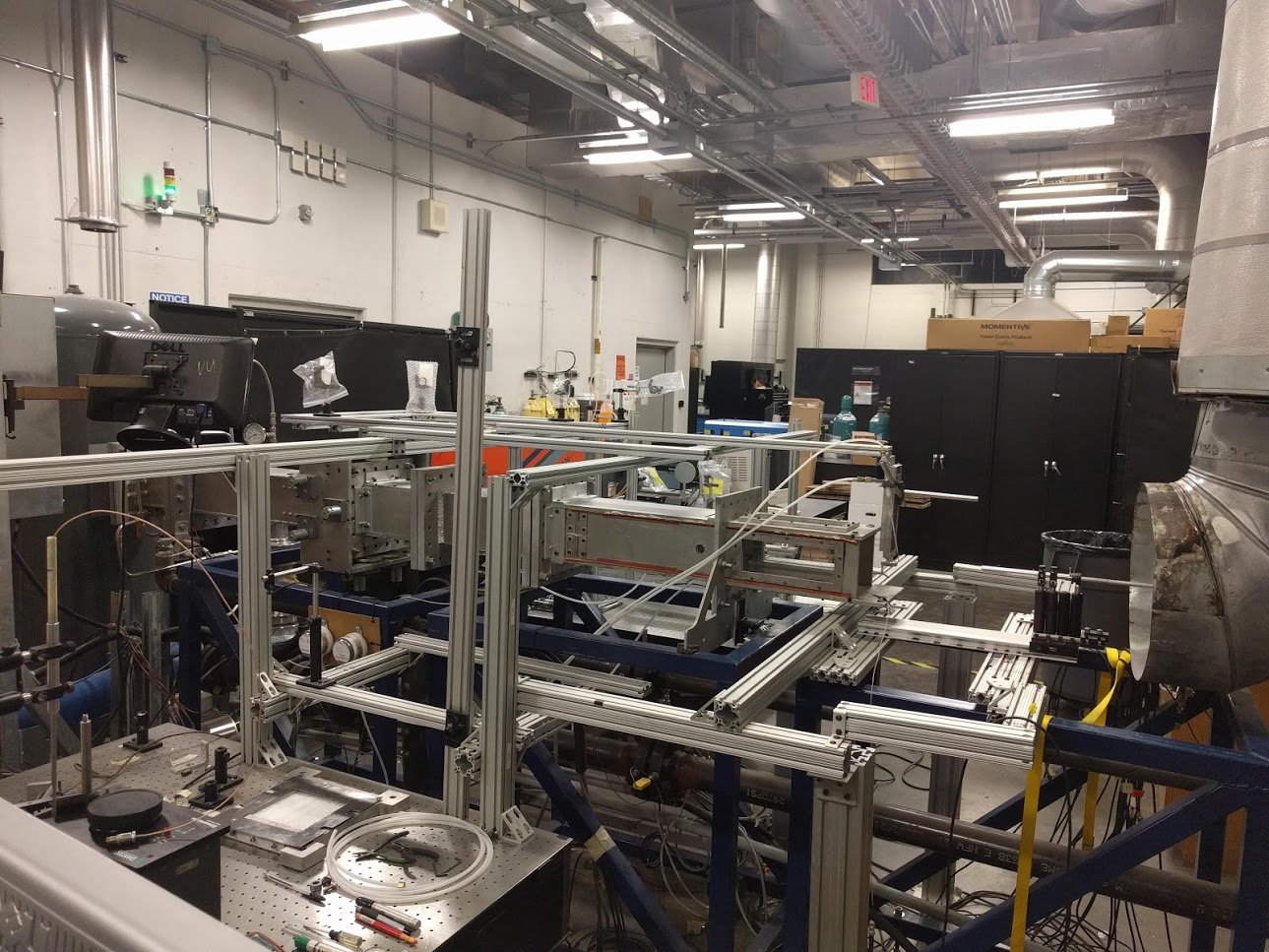Turbulent, spherically expanding flames¶
The first project I worked on for my PhD concerned freely-convecting, spherically-expanding flames in a windtunnel like facility. Ordinarily, such flames are investigated in so-called flame bombs. Vessels filled with a combustible mixture that is ignited in the center and the evolution of the flame is observed through windows built into the vessel. This approach has two major disadvantages for the investigation of turbulent flames which we are addressing with a convecting facility. While the flame bomb allows one to record full time-series of the flame evolution, it is very time and resource consuming to obtain a significant amount of samples to compute converged statistics. Moreover, the type of turbulence that is imposed on the flame is limited to homogeneous isotropic turbulence and effects such as mean shear, specific types of inhomogeneous turbulence or mean flow compressibility can not be investigated.

A look at the low-speed facility inside the lab. Some amount of chaos is necessary for brilliant work!¶
Initially, I had the chance to use this project to get acquainted with the fundamentals of different experimental diagnostics, signal processing and statistical data processing. We built an active type of turbulence generating grid that allowed us to produce relatively high turbulence intensities in the mean flow. Using hot-wire anemometry (HWA) and Particle Image Velocimetry (PIV) I tuned the operating conditions to provide homogeneous, isotropic turbulence in a methane-air flow that could support combustion experiments. The characterization of the facility and a detailed comparison between HWA and PIV diagnostics, including guidelines for proper comparison, were published in the Journal of Turbulence.
I then used Planar Laser Induced Fluorescence (PLIF) of the OH radical to investigate the behavior of the spherically expanding flames in this facility further. The particular goals were to make sure that results in this facility can be compared to traditional flame bomb setups and to investigate flame properties that require high statistical convergence, such as the flame surface density and the turbulent flame brush thickness. The results were published in Combustion and Flame.
The results and methodologies developed in my research were also used to baseline and inform experiments on spherically expanding flames in a supersonic flow, i.e. compressible flow, facility and flame acceleration experiments. While all of this research is very fundamental in its nature, the results and methodologies are quite important for the development of future generations of gas turbines, internal combustion engines and any kind of application that involves reacting flows and high turbulence intensities.